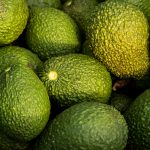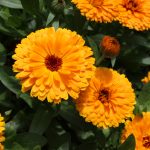
PROFITABLE AND GROWING CROPS: LAVENDER, LAVENDER AND LAVANDIN
One of the alternatives currently on the rise, related to the search for new crops in rainfed agriculture, especially in areas with low productivity, are lavender, lavender and lavandin. Both are aromatic plants, whose production is mainly focused on obtaining essential oil, a complex mixture of volatile compounds, extracted by steam distillation or hydrodistillation. The chemical characteristics of these oils depend on the extraction method used, the species and variety of the plant and other external factors, such as soil conditions and even climate. The potential for cultivation in Spain is great, due to suitable climatic conditions. However, large-scale production of these two species is not common, with the exception of areas in Castilla La Mancha, where the largest production areas are located, supplying distilleries, which account for up to 10% of the production of lavender and lavandin essential oil worldwide. There are also other models of smaller family-run farms, in which cultivation is combined with the production of products derived from the oil, such as soap. It should be borne in mind that the initial investment to start up a farm of this kind is high, due, among other factors, to the price of the plant and the need to acquire machinery that must be imported. This leads to the fact that, initially, it is always necessary to start with a small area with few hectares.
General characteristics
Lavender (Lavandula angustifolia Mill.) and lavandin (Lavandula x intermedia Emeric & Loisel), a natural sterile hybrid between lavender and lavender, specifically Lavandula angustifolia and Lavandula latifolia, of which there are currently numerous commercial varieties, stand out.
Lavender is a suffrutice species, that is to say, it is a plant with a central woody stem only in its lower part, so that the rest of its structure is herbaceous, which gives it a nature somewhere between a shrub and a grass. It can reach up to one metre in height, although it does not usually exceed 50 cm. The leaves, narrow and elongated, are located both at the base of the plant and on the flowering stems. When the plant is young, the leaves have a greyish colour, which over time changes to more greenish tones. As a general rule, the flowering stems are not branched, i.e. there is only one spike per stem. The flowers are slightly larger than those of lavender and are a deep blue to violet in colour. The flowering period is from July to August.
Lavender forms a taller bush than lavender and is more greyish in colour. Unlike lavender, the leaves are arranged at the base of the plant, although they can also be found on the flowering stems. The leaves are also wider than those of lavender. The flower stalks are usually up to 50 cm high and are usually branched, forming a characteristic trident, each with up to three spikes. The smaller flowers are pale lilac in colour. It flowers between July and September.
Lavandin is of great interest because its productivity and vigour is superior to that of its progenitors. The shape of the plant is more rounded and homogeneous, as a result of hybridisation. In turn, the flower stalks are also somewhat longer, as their length is usually between 60 and 80 cm. The spike is larger, more pointed and of a more intense violet colour. Two lateral spikelets are located at the base. The leaves are linear oblong, more or less obtuse and narrow. In this species, four varieties of great importance in the market can be distinguished: Super, Abrial and Grosso. Of all of them, the most cultivated in Spain is the Super, which forms a bigger bush, with greyish blue inflorescences, and is more hardy than the Abrial, which means that it has a greater capacity to resist adverse conditions of the environment, such as drought. It has a disadvantage, which is a lower yield. The Abrial variety is a more compact bush or, in other words, a less vigorous growth. The flowers are deep blue in colour. It is very demanding in terms of soil conditions and humidity. The Grosso variety (most cultivated in France), very vigorous and homogeneous, has a hardiness similar to that of Super and its flowers are more intense blue than those of Abrial. With its cultivation it is possible to obtain a higher yield in terms of essence, but with a lower quality.
Environmental conditions
In relation to temperatures, although they are highly resistant to low temperatures, their development is optimal in areas where cold does not accumulate. They have a high tolerance to drought and dry environments, which means that they are all xerophytic species. The incidence of direct sunlight is also an important factor when deciding on orientation. The minimum rainfall for an acceptable level of production is 300-350 mm. However, it should be borne in mind that too prolonged a drought can result in a considerable reduction in yield. Dry winds, provided they are not too strong, improve the quality of the essence by favouring the evaporation of the terpenes, which are volatile compounds that are not very appreciated commercially.
Taking into account their characteristics, it is established that these species require well-drained soils, such as soils with a higher sand content, which provide porosity, as opposed to what happens in clay soils, with a high risk of waterlogging, which can last for several days after excessive watering or high rainfall. However, it should be borne in mind that in areas with a predominance of sand, there may be large losses of water to the deeper layers, which means that more frequent watering is required. With regard to pH, all species preferably grow in calcareous areas, i.e. with high pH values (alkaline). Even so, lavender and lavandin can grow in soils with acidic elements, albeit in small quantities. Neither of them require high levels of organic matter, since in their natural habitat they grow in stony soils with low organic matter content. Excessive fertilisation can lead to a loss of aroma potency. In case of very low levels (very poor soils), a fertiliser can be applied before the flowering period, but in very small quantities to avoid complications.
Management
The most common method of production of lavender, lavender and lavandin is rainfed. However, it should be borne in mind that in order to obtain optimum yields, irrigation or deficit irrigation may be necessary when rainfall levels do not reach minimum values at critical stages of development. A plantation is considered to be irrigated when water is supplied to cover the plant’s needs. In deficit irrigation, water is supplied strategically according to the phenology of the crop, but always in quantities of over 1000 m3/ha/year. The main objective is to obtain the highest yield with the lowest consumption. In short, water is an important factor in ensuring an increase in productivity and crop quality. However, caution is also necessary, as an increase in ambient relative humidity is associated with an increase in the risk of pest incidence, which, together with narrow planting frames, can lead to a reduction in the quantity and quality of production.
Therefore, once the decision has been taken on the model to be implemented (rainfed or irrigated), a planting frame must be established, depending on the characteristics of the land and the availability of water. This is a decisive point, as it will have a great influence on different aspects. The minimum size is 1.8 x 0.7 m, which should be increased in shallow rainfed soils, as otherwise there is a risk that the roots will not be able to expand sufficiently through the soil to ensure water intake without having to compete with other plants for water. Furthermore, in deep soils with water availability, although a priori the most favourable thing might seem to be to reduce the planting frame in order to increase productivity, it must be considered that with the passage of time, the tree will grow larger and could compete for light, nutrients and water, reducing photosynthetic efficiency.
Pruning
Pruning is carried out with two main objectives, which are to maintain a harmonious and well-balanced development, thus ensuring a uniform incidence of sunlight on all parts; and to guarantee a balance between production levels and the correct development of the rest of the plant. In this crop, three types of pruning can be classified: training pruning, production pruning and rejuvenation pruning. Formative pruning is carried out in the early stages of growth, determining the desired shape of the plant, i.e. it helps to define the final structure of the plant. As its name suggests, production pruning aims to improve production levels by eliminating old, damaged or insufficiently productive stems and replacing them with younger ones. Finally, it is worth mentioning rejuvenation pruning, in which most of the plant is cut back, either because most of the structures have been affected by some pathology or due to ageing. It is not advisable to carry it out in a drastic way, as this could cause stress.
Pests and diseases
Cottony mealybug (Planococcus citri): the different common names it has refer to its mealy appearance, due to the waxy secretions of its body, as well as to the cottony appearance of the ovigerous mass, produced by the female. It is a very polyphagous species, which means that it can feed on a wide variety of plant species, each of which may belong to very different botanical families. It has marked sexual dimorphism, i.e. there are clear differences between males and females. The male is yellow to reddish-brown in colour, with paler antennae and legs. The adult female is covered with a white waxy secretion. The eggs, white when laid, turn pale yellow as hatching approaches. They are bound together by very fine waxy filaments, which help to form the egg mass. As it feeds on the phloem, it excretes large quantities of honeydew, a sugary substance resulting from the digestion of the sap, on which fungi known as black mould develop, whose growth on the leaves leads to a reduction in the photosynthetic and respiratory rate.
Cecidomyids (family Cecidomyiidae): These are a group of species of nematoceroid diptera, known as gill flies, because the larvae feed on plant tissues and cause an abnormal growth, the gill. This structure is so conspicuous that the insect can be identified solely by the appearance of the deformation and develops due to egg-laying. The biology of many of these species is still unknown. They are delicate insects between 2 and 3 mm long, whose hairy wings are very characteristic, as this is not a common feature within the order Diptera to which they belong. They also have long antennae. Although they are a pest for certain crops, in some cases they are natural enemies of certain pests, such as aphids and mites.
Lavender beetle (Melighetes subfunatus): coleopteran, whose damage is mainly due to the fact that they feed on the reproductive organs of the flowers, even completely destroying the flowering spikes of the plant. Its size does not exceed 2 mm, but it can be a very dangerous pest when the population density is very high.
Lavender coleopteran (Arima marginata): a species of coleopteran, belonging to the Chrysomelidae family, which has a marked sexual dimorphism in terms of length, with females ranging from 12 to 20 mm in length and males from 6 to 12 mm. They are shiny black with orange bands on the margins. Only one generation occurs each year.
Root rot (Armillaria mellea): a fungus that can be pathogenic for certain species, such as lavender and lavandin, but is edible for humans. As the common name indicates, it causes root rot, although the main symptoms are observed in the upper parts and, of course, in the wilting and even death of the branches. In short, it causes the death of the plant due to the loss of capacity to absorb, through the roots, the nutrients and water necessary for its survival. It is common in crops grown on compact, heavy and humid soils that tend to root asphyxia and in young plantations that are established in areas with previous forestry use. Roots begin to change colour, becoming browner, followed by blackening of the bark. All tissues to which the parasite spreads will disintegrate, turning into a fibrous mass. When the infection reaches the roots near the collar, it may progress upwards towards the base of the stem, where a lesion appears, which is manifested by exudations of sap or gum.







